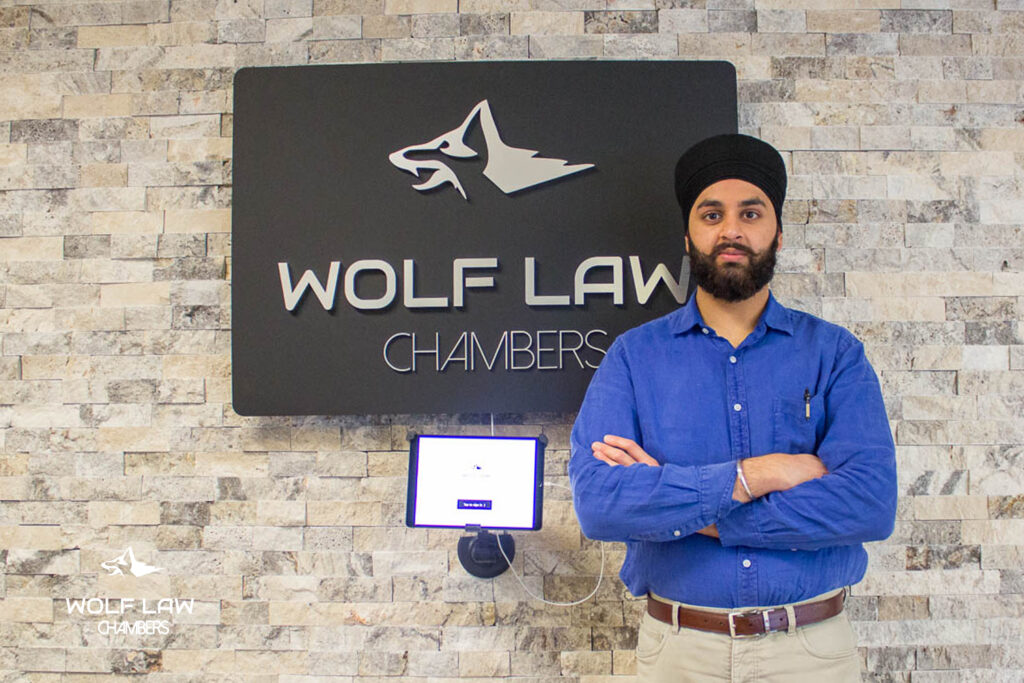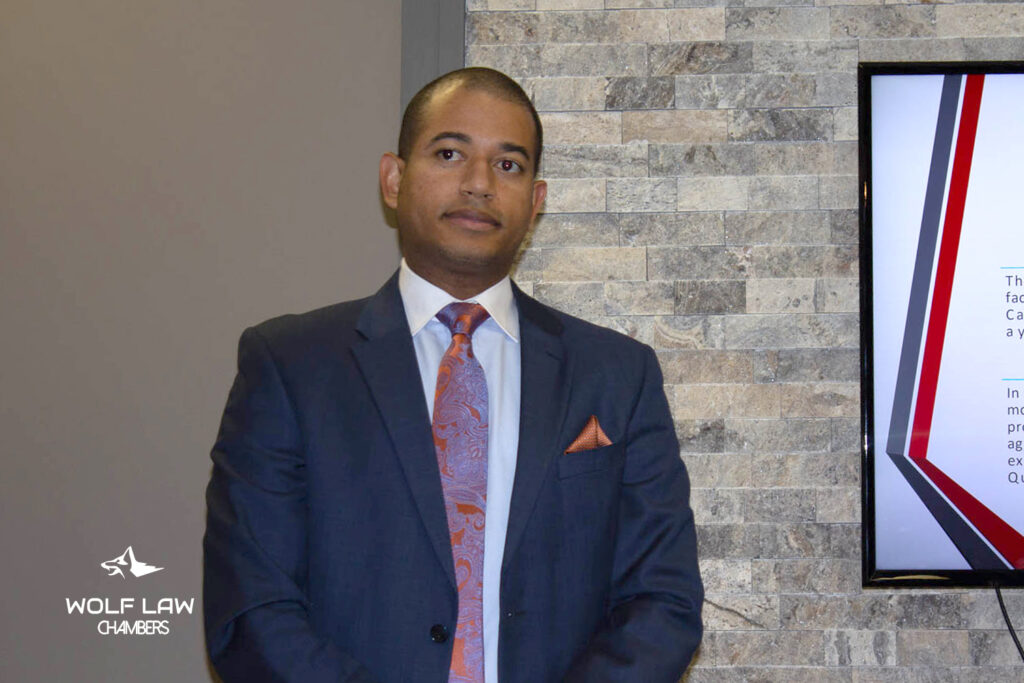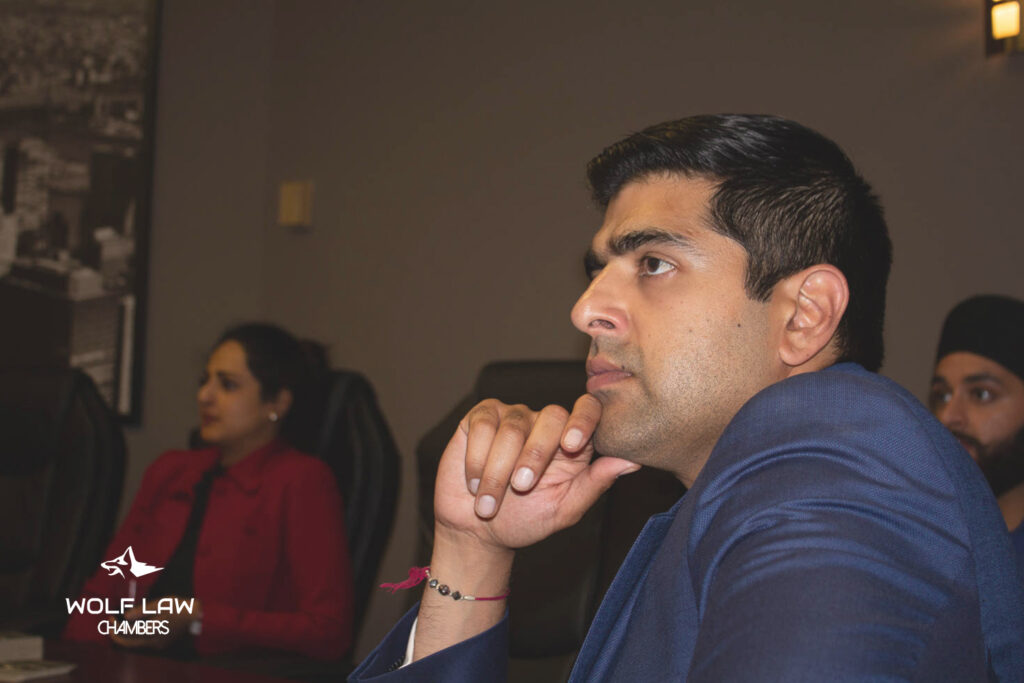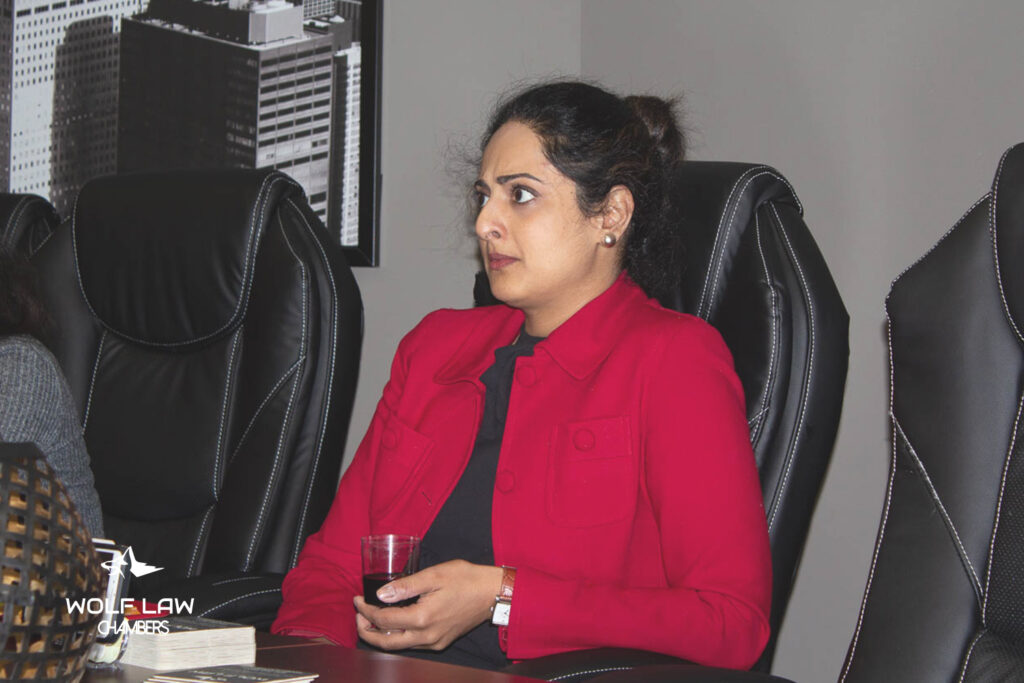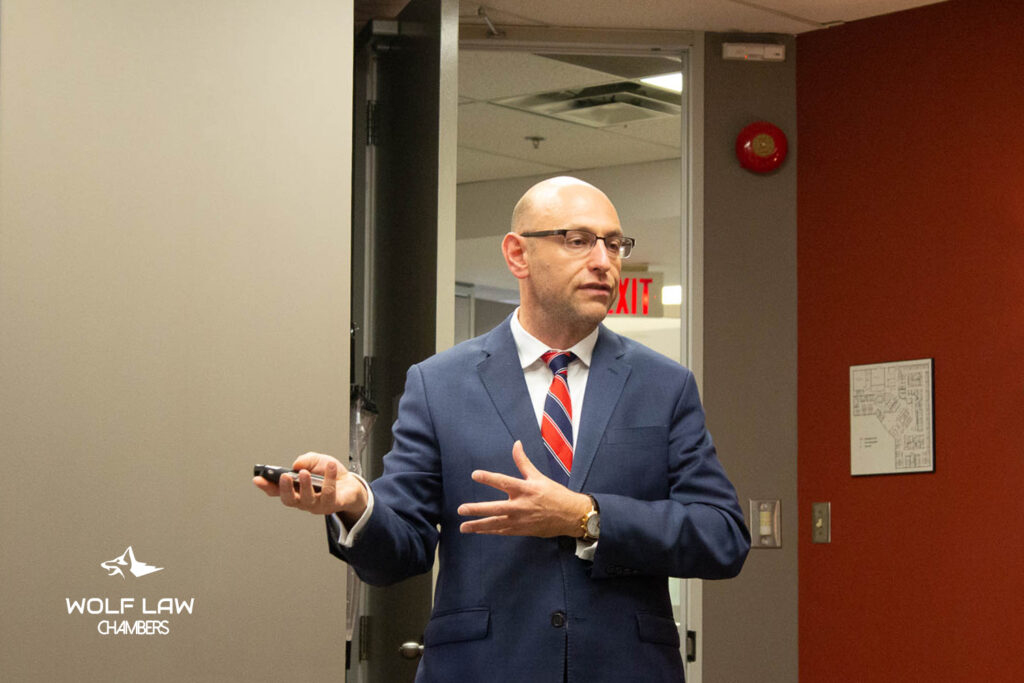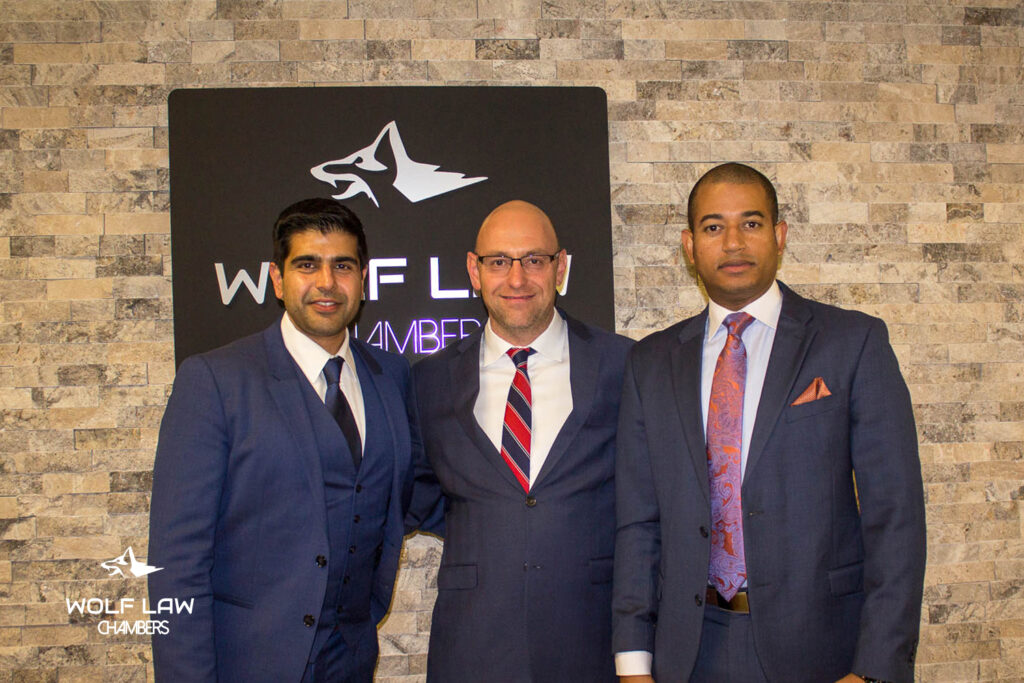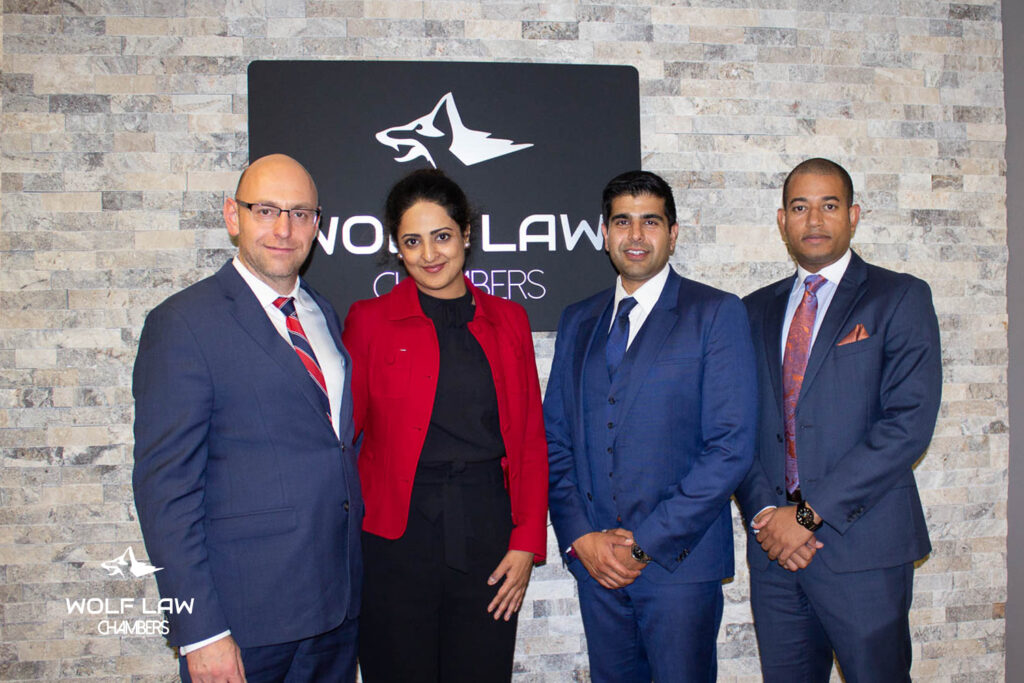Archive for September 2019
Hazelton v Perfect Smile: Subleases and Assignments
The Ontario Court of Appeal recently illustrated the nature of commercial tenancies in the case of V Hazelton Limited v Perfect Smile Dental Inc., 2019 ONCA 423. For many years, the courts have been unclear about the impact of a sublease on the relationship between landlord and tenant. However, the time has come for clarity, as the Court of Appeal weighs in on the complex nature of landlord-tenant relationships, particularly where there is a sublease involved.
Facts of the Case
On September 2010, Hazelton (Appellant) entered into an agreement with Perfect Smile (Respondent) to lease the premises. Both parties agreed to a 7-year lease (“Head Lease”), commencing October 1, 2010 and expiring September 30, 2017. The lease agreement had a 5-year renewal option for the tenant, Hazelton, under section 7 of the lease.
Hazelton completed substantial renovations on the premises in 2013. The total cost amounted to $280,000. Hazelton asserted that it would not have spent this money without the benefit of the renewal option.
On August 2016, with Perfect Smile’s consent, Hazelton entered into a sublease agreement with the company, Outhere, a retail clothing store. The term of the sublease was from September 1, 2016 to September 2017 (the last day of the Head Lease). The sublease did not reserve the last day of the Head Lease’s term to Hazelton; instead, both leases were set to expire on the same day. However, this sublease was more restrictive on the sublessee than the Head Lease was on the tenant, since there was no transfer of renewal rights to Outhere.
On March 2, 2017, Hazelton purported to exercise its right to renew the lease. So Hazelton and Perfect Smile began negotiating rent. However, there was no agreement on rent. Months later, on September 28, 2017, counsel for Perfect Smile delivered a letter to Hazelton stating it had no right to exercise the 5-year renewal option. Two days later, the lease expired.
The sublessee, Outhere, managed to enter into an agreement with Perfect Smile, which allowed Outhere to remain in possession of the premises after the sublease ended. It paid Perfect Smile the same rent as it paid Hazelton.
Hazelton was quite unhappy with this outcome, for it sought to exercise its option for renewal. Thus, it commenced an application seeking the following relief:
- A declaration that it rightfully exercised its option for renewal;
- An Order that Perfect Smile and Outhere deliver vacant possession of the premises; and
- An Order that an arbitrator be appointed to determine rent payable during the 5 years, pursuant to the Head Lease.
The Application judge favoured Hazelton, stating Perfect Smile had accepted the renewal option and accepted the renovations by never giving Hazelton notice of alleged default despite knowing about the renovations by at least early 2017. Perfect Smile was held to be in breach of its contractual duty of good faith.
The judge then accepted the proposition that “where rights granted in a sublease are more restrictive than those contained in a head lease, the result is that the rights not granted to the subtenant are reserved to the tenant” (see paragraph 13). The application judge also rejected the proposition that if the last day of the Head Lease is not reserved by the tenant, the sublease is deemed to be an assignment rather than a sublease.
Then, the judge found that Hazelton could claim damages and pursued damages analysis, which led to the conclusion that no damages shall be awarded to Hazelton, since no losses were accrued by the conduct of Perfect Smile.
Main Issues
The matter was brought to the Ontario Court of Appeal, as Hazelton was not seeking damages but sought to retain the premises as the tenant. The principal issue of concern, rather than damages or harm, is whether Hazelton made an assignment rather than a sublease and forfeited its leasehold rights because of its failure to reserve the last day of the Head Lease Term.
The main question, then, must be on the nature of subleases and assignments. What are they? Once this addressed, one may determine whether Hazelton subleased or assigned the premises to Outhere. This will address the importance of tenants reserving the last day of the sublease for themselves.
Relevant Laws
The difference between assignment and sublease are established quite clearly in paragraph 31 of the case, which states:
When a lease is assigned to a third party, the third-party assignee becomes the tenant of the landlord and a privity of estate is established between the two. When the lease is assigned, the landlord’s privity of estate with the original tenant comes to an end, but the privity of contract remains… In contrast, a sublease creates no direct relationship between the subtenant and the landlord – there is neither privity of estate nor privity of contract between them. Rather, the head tenant stands in the position of landlord vis-à-vis the subtenant, while retaining its position as tenant vis-à-vis the original landlord.
The Court then goes on to state, in paragraph 32, the following:
the head lease is assigned unless the sublessor retains a reversionary interest by reserving for itself the last day or some other time period at the end of the term.
So how can we tell the difference between an assignment and sublease? Upon reviewing the case law, and the previous decision, the Court of Appeal is surprised that nobody raised section 3 of the Commercial Tenancies Act, RSO 1990, c L 7 [CTA]. The Court stated, in paragraph 48, “[the given case law] reflected an effort by some courts to avoid characterizing a putative sublease as an assignmnet by expanding the notion of a revisionary interest beyond temporal limits. Arguably, such judicial efforts are unnecessary in Ontario by reason of s. 3 of the CTA.”
Section 3 of the CTA states as follows:
The relation of landlord and tenant does not depend on tenure, and a reversion in a lessor is not necessary in order to create the relation of landlord and tenant, or to make applicable the incidents by law belonging to that relation; nor is it necessary, in order to give a landlord the right of distress, that there is an agreement for that purpose between the parties.
The Court identifies four negatives in this section, namely that:
- The relation of landlord and tenant does not depend on tenure;
- A reversion in the lessor is not necessary in order to create the relation of landlord and tenant;
- A reversion in the lessor is not necessary in order to make applicable the incidents by law, belonging to the landlord-tenant relation; and
- An agreement is not necessary in order to give a landlord a right of distress.
This was used to make the following interpretation in paragraph 68:
Reading s. 3 in context, I interpret it to mean that there may be a sublease even if the last day in the head lease is not reserved, but only when there is sufficient evidence to show that the objective intent of the parties, as reflected in the sublease, was not to create an assignment. Recognizing that a commercial lease is not only a conveyance but also a contract, courts should be permitted to consider the objective intentions of the parties to a purported sublease in order to determine the nature of the impact on the subletting party vis-à-vis its rights under the head lease. In other words, a party may demonstrate that, notwithstanding a failure to reserve the last day of the head lease term, an assignment was not intended by the parties.

Analysis of the Court
This interpretation addressed the heart of the issue at hand, which is whether Hazelton made an assignment rather than a sublease and forfeited its leasehold rights because of its failure to reserve the last day of the Head Lease Term. In this case, the parties provided sufficient evidence that they did not intend an assignment. It must be a sublease. Section 7 of the sublease clearly states that Hazelton has the right to renew the lease and that it is not obliged to renew on behalf of Outhere; and that Outhere has no right to renew the option, as its rights under the sublease expire at the end of September 30, 2017. This was sufficient despite Hazelton not reserving the premises for itself on the last day of the sublease agreement.
As for the other issues mentioned in the case, such as whether the Court of Appeal had jurisdiction to hear this matter or whether Hazelton breached its agreement by renovating the premises, the Court found that it did have jurisdiction and that Hazelton did not breach the agreement. The jurisdiction was based on section 6(2) of the Courts of Justice Act, which grants the Court discretion to combine and hear all issues raised on this appeal. Furthermore, this matter was beyond the jurisdiction of Divisional Court.
As for the breach allegation, the Court simply found that “there is no basis to interfere with the applicant judge’s conclusion that Hazelton did not breach the lease.” The Application judge properly decided this. The main mistake by the application judge was engaging in damages analysis in a matter where damages were not sought.
In the end, the Court inter alia ordered Perfect Smile to give back the premises to Hazelton, for it rightfully exercised its option to renew the lease for a 5-year period.
Conclusion
There are a few important lessons to take from this complex case. First, if intending to enter into a sublease agreement, the sublessor should provide clear evidence within the agreement or otherwise to purport that the parties do not intend to enter into an assignment. Second, this clear intention against assignment may be sufficient to render the agreement a sublease even if the sublessor does not reserve the premise for themselves.
This case also reminds the courts to rely on section 3 of the CTA in determining the nature of commercial tenancy relationships, particularly where there is a need to distinguish between the assignments and subleases. It is noted that:
- The relation of landlord and tenant does not depend on tenure;
- A reversion in the lessor is not necessary in order to create the relation of landlord and tenant;
- A reversion in the lessor is not necessary in order to make applicable the incidents by law, belonging to the landlord-tenant relation; and
- An agreement is not necessary in order to give a landlord a right of distress.
-Aaron Rajesh
Factors to Consider For Your Cross-Border Legal Practice
On Thursday September 19th, 2019 the Wolf Law Chambers community was delighted to have hosted an event attended by sole practitioners from very diverse areas of practice. Many of those in attendance possessed the ability to conduct their practice in foreign jurisdictions and obtain clients internationally. Although this can expand one’s outreach and client base, there are underlying issues that must be considered. Sole practitioners, Dezso Farkas and Gideon McMaster of Farkas Law and McMaster Law, respectively, co-hosted the evening and shared their expertise in professional responsibility for cross-border legal practice.

Some of the lawyers in attendance had been called to the bar in Trinidad & Tobago, India, and the United Kingdom, besides having their current practices established in Ontario. These professionals have to abide by professional conduct rules in both Ontario and abroad, which can be quite a challenge when matters intersect. In these scenarios it is vital to consider 5 areas of professional responsibility: general applicability of professional conduct rules, retainer agreements, marketing of your legal services, bill disputes or professional complaints, and trust requirements. Dezso and Gideon compared the Rules of Professional Conduct in Ontario and the Legal Professional Act of Trinidad & Tobago, which is Mr. McMaster’s home country. A comparative analysis of the 5 areas of responsibility raised immense awareness about the caution that legal professionals must proceed with. What may be applicable and legal in one jurisdiction can have the exact opposite implications in another. Legal professionals are obligated to comply with different sets of rules from multiple jurisdictions when matters cross international borders, so it is in their duty of care to remain well informed of such rules at all times.
1- Professional Conduct Rules
The Legal Professional Conduct Act of Trinidad & Tobago contains a Code of Ethics for Attorneys at Law and is contained in a schedule to the Act. There are two sections in the schedule: the first contains general guidelines while the second has specific prohibitions and mandated provisions. Meanwhile, the Rules of Professional Conduct in Ontario have seven chapters, each of which addresses a different area of consideration for one’s legal practice.
2- Retainers
In Trinidad & Tobago, a retainer is the establishment of a signed agreement between a lawyer and a client. In Ontario, a lawyer-client relationship may be established without formality. Under specified rules in Ontario, if you are consulted by a lawyer and provided with legal advice, a lawyer-client relationship exists.
3- Marketing of Legal Services
In Trinidad & Tobago, attorneys are not permitted to advertise and may only market their services within the confinements of the Legal Professional Conduct Act. Lawyers are encouraged to build their client base through hard work and reputability. In Ontario, a lawyer can market their services but is limited in the scope of doing so.
Article 4.2-1 of the Rules of Professional Conduct in Ontario states the following:
“A lawyer may market legal services only if the marketing
(a) is demonstrably true, accurate and verifiable;
(b) is neither misleading, confusing, or deceptive, nor likely to mislead, confuse or deceive; and
(c) is in the best interests of the public and is consistent with a high standard of professionalism [1].”
A few examples of marketing that may infringe upon this rule may be the suggestion of qualitative superiority over other lawyers, raising expectations through false perceptions, using testimonials that contain emotional appeals, etc.
4- Disputing Bills
In Trinidad & Tobago, a client may file a complaint to the Disciplinary Committee in the case of a dispute arising between them and the lawyer. Professional complaints are also filed with the Disciplinary Committee. In Ontario, clients are encouraged to talk to their lawyer/paralegal and if that does not settle the dispute, they can contact the Assessment office to have their bill reviewed. An Assessment Officer of the Ontario Superior Court of Justice will then review the lawyer’s bill. For professional complaints, the Complaints and Compliance department is the first point of contact, and if then proceeds to the Law Society, which can deal with a wide array of matters related to lawyer and paralegal professional conduct. If there is a need to recover lost money due to a legal professional’s dishonesty, one may apply to the Compensation Fund for further review.
Trust Requirements
In Trinidad & Tobago, the requirements for trust accounts are principle based and not entirely set in stone. The underlying agenda of such principles include honesty, punctuality, diligence, separation of personal and trust accounts, and ability to refund money owed to clients. On the contrary, Ontario is very strict in their approach to trust requirements.
There are strict guidelines on all of the following:
- Books and Records
- Opening a Trust Account
- Interest on the Trust Account
- Trust Account Signing Authority
- Trust Account Operation
- Reconciling a Trust Account
- Trust Deposits, Transfers, Withdrawals
- Closing a Trust Account
- Reporting Mixed Trust Accounts [1]
Overall, there are many factors that should be taken into consideration for one’s cross border legal practice and it is deemed necessary to remain in tune with rule of professional conduct for all jurisdictions that apply.
The following questions were raised by both Dezso and Gideon for those who are engaged in cross-border legal practices:
- Could there be lawyer/client relationship of some type in Ontario?
- Should it be defined or limited in writing?
- Which Rules of Civil Procedure are redundant between the two jurisdictions?
- Which rules conflict? (ex. different standards)
- Which is the higher standard? (ex. trust requirements)
- Through what means did the client find me?
- If a complaint arises, where should it be made?
- Should this be defined in an Ontario retainer agreement?
- Where will trust funds be deposited?
- Can trust funds be deposited somewhere else?
- Should a firm in the foreign jurisdiction be involved to act as party to the retainer agreement and receive the client’s trust funds?
- How should your relationship to that foreign firm be defined?
- Does any aspect of the matter involve Ontario law?
- What type of advice is being given and does it implicate Ontario law in any way?
In answering the above, one may assess whether or not they are complying with the rules of the respective jurisdictions.
Overall, Mr. Farkas and Mr. McMaster brilliantly raised awareness about practicing Ontario lawyers called to the bar in foreign jurisdictions. They provided those in attendance with real life scenarios that exhibited the need for understanding professional responsibility when practicing across borders.
Wolf Law Chambers, located at 90 Matheson Blvd West, Mississauga, ON L5R 3R3 is consistent and thorough in hosting events like this. We invite you to join us on October 10th, 2019 for our “Surviving the Audit” event.
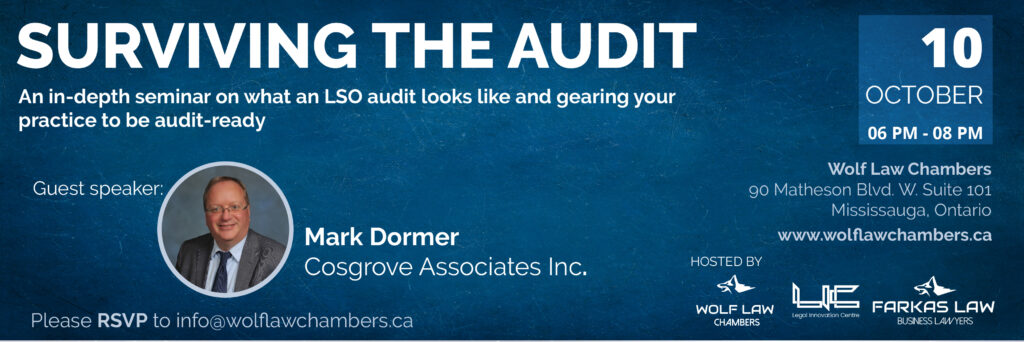
Please subscribe to our newsletter and tune in for updates on future events and articles.
Best Interests of the Child: An Intersectionality Between Family and Immigration Law
Article 3.1 of the United Nations Human Rights (UNHR) Convention on the Rights of the Child (CRC) states the following:
In all actions concerning children, whether undertaken by public or private social welfare institutions, courts of law, administrative authorities or legislative bodies, the best interests of the child shall be a primary consideration [1].
The Convention on the Rights of the Child is the most widely ratified treaty in human history with 194 countries abiding by it [2]. It is internationally observed and accepted, while it’s application and practice is a topic for another day. In understanding who is protected under the CRC, we must define what it means to be a child.
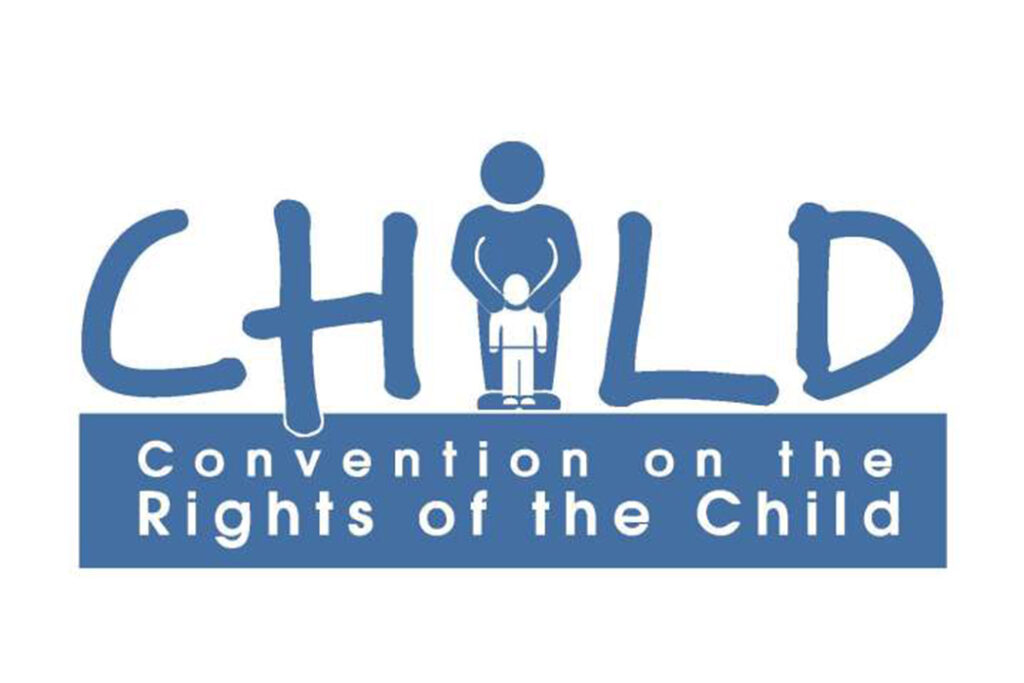
According to the United Nations a child is,
…every human being below the age of eighteen years unless under the law applicable to the child, majority is attained earlier [1].
Now, it is quite important to asses the relevance of these international statutes in relation to Human Rights within Canada. To put into perspective the importance of human rights in Canada, we must understand that human rights are protected federally and provincially. The human rights laws in Canada stem from the Universal Declaration of Human Rights (UDHR). In fact, Canadian lawyer and scholar, John Humphrey, played an integral role in the drafting of the UDHR in 1948 as well [3]. Globally, many countries have applied the declaration and its contents to bolster their own national legislations and to act in accordance with the statutes outlined within international human rights laws. In Canada, human rights are entrenched in the Constitution of this very nation, most notably in the Canadian Charter of Rights and Freedoms but they have an overlapping relevance in other areas of law as well. Family and immigration law within Canada places great importance on the best interests of the child, drawing from the Convention on the Rights of the Child. This principal governs decisions and judgements within family and immigration matters, that of which involve children [4]. It is truly a point of intersection across both fields of law and legislation.
The Canadian Bar Association brilliantly outlines the best interests of the child and the three fold concept that entails it.

They use the following general commentary from the Convention on the Rights of the Child to elaborate on their viewpoints about the best interests of the child:
A substantive right – a primary consideration in actions concerning the child due to the child’s dependency, maturity, legal status and often “voicelessness”;
An interpretive principle – if a legal provision is open to more than one interpretation, the interpretation which most effectively serves the child’s best interests should be chosen;
A rule of procedure – legal representation, timely decisions, reasons for how a decision was reached, how factors were weighed, and how the child’s views were considered. [4]

In other words, children have a legal entitlement that ensures those decisions which concern them are carried out with their best interests as a primary consideration. Next, for legislation that is open to interpretation, interpretations serving the best interest of the child should be chosen [4]. The final component involves procedural considerations for the best interests of the child. Whether it is substantively or procedurally, the best interests of the child are to be weighed and considered first and foremost. With this three-fold concept underlying the concepts and legislation set forth by the CRC, let’s examine how it has played an effective role in Canadian law.
In determining child access and custody in the province of Saskatchewan, section 8 of the Children’s Law Act outlines the necessary conditions to be met when making a decision about ordering custody of a child. Subsequently, they note considerations that are to be weighed in granting custody of the child as well. These include, but are not limited to, the capacity of the person seeking custody of the child, the child’s wishes, the quality of the relationship between the person seeking custody and the child themselves, the physiological, emotional, psychological, social, and economic needs of the child [5].
Additionally, section 24 of the Children’s Law Reform Act of Ontario determines the merits for application of custody or access for a child [6]. This statute places immense importance on the best interests of the child, with special consideration of the child’s needs and circumstances. Some of these needs and circumstances include the plan proposed by the person(s) applying for access of custody of the child, the child’s views and preferences, the stability of the family unit in which the child will potentially settle, to name a few [6]. The Revised Statutes of Ontario also outline the procedural practices in place by the court in issuing orders for the custody and access of a child [7].
Federally, the Divorce Act, examines the best interests of the child in carrying out orders for custody of a child [8].
Under section 16, subsection 8, it states,
In making an order under this section, the court shall take into consideration only the best interests of the child of the marriage as determined by reference to the condition, means, needs and other circumstances of the child [8].

It is quite apparent that federally and provincially the underlying principles governing child custody and access in family law clearly place a high degree of significance on the best interests of the child. The priority placed upon the needs and the circumstances of children is not just limited to the area of family law. It also constitutes the legislation surrounding immigration in Canada involving children. In exploring the application of the best interests of the child within Canadian immigration law, let’s take a look at the Immigration and Refugee Protection Act. Pursuant to the act, those normally not able to seek permanent residency in Canada, are able to apply under humanitarian and compassionate grounds in special circumstances [9]. The humanitarian and compassionate grounds assessment weighs the best interests of the child highly and its jurisdiction is within Canada and overseas [9]. Generally, the child’s physical, emotional, social, and cultural welfare are factored in when assessing a humanitarian and compassionate grounds application [9]. The factors considered include, the level of dependency between the child and the H&C applicant, the child’s link to the country in relation to which the application is considered, the impact of returning to their home country, the medical needs of the child, the impact on the child’s education and growth, etc. [9]
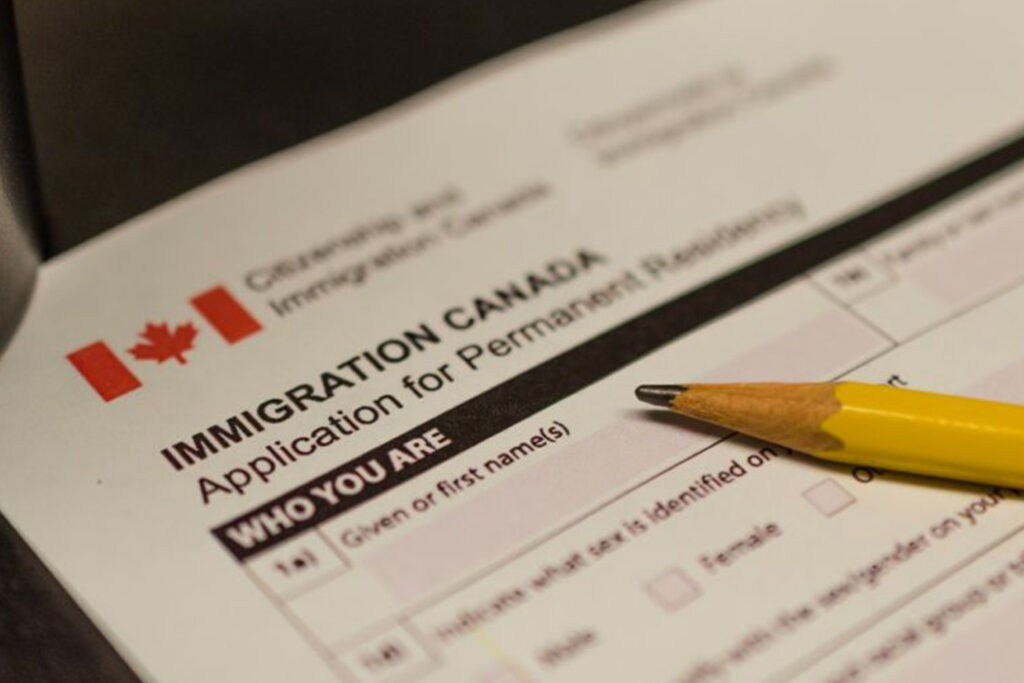
Immigration can involve the detainment and release of individuals depending on the context of their specific case.
Under Division 6, section 60 of the Immigration and Refugee Protection Act, states the following:
For the purposes of this Division, it is affirmed as a principle that a minor child shall be detained only as a measure of last resort, taking into account the other applicable grounds and criteria including the best interests of the child [10].
The Immigration Appeal Division does not overlook the importance that is to be placed upon the safety and best interests of the child. It is affirmatively understood from this statute that detaining a minor is the absolute last resort and does not serve in the best interest of the child [10].
Moreover, the right to appeal immigration decisions under the Immigration Appeal Division has procedural laws in place that administer how the government will proceed in detention and release of immigrants/refugees [10].
Section 68, subsection 1, states the following in regard to a removal order being stayed:
To stay a removal order, the Immigration Appeal Division must be satisfied, taking into account the best interests of a child directly affected by the decision, that sufficient humanitarian and compassionate considerations warrant special relief in light of all the circumstances of the case [10].
In the case of a removal order being stayed, the best interest of the child is again given the utmost priority if a child is directly involved. The statute aims to heavily consider humanitarian and compassionate grounds when ordering a stay for a child [10]. This leads one to believe that Immigration Canada carefully formulates a decision oriented in the best interests of the child.

A famous Canadian immigration case based upon H&C grounds is that of Baker v. Canada. An illegal immigrant in Canada for 11 years at the time, on the verge of being deported, filed an application for permanent residency [11]. Her application was rejected and when she filed with the Federal Court, they deemed that it was not necessary to evaluate her application in light of the best interests of her children. On appeal, the Supreme Court of Canada reversed this decision. They held that the human rights of Baker’s children should be considered and that decision makers of this case should abide by the values in international human rights law, specifically the Convention on the Rights of the Child [11]. Overall, it was established that an immigration decision made on H&C grounds would be arbitrary if an analysis of the best interests of the child was not implemented [11].
Closing thoughts
Stemming from international human rights law, the best interest of the child is a principle vested in Canadian family and immigration law involving children. It is undeniably an overlap between the two areas of law and the general guidelines are quite the same. In all actions concerning children, the primary consideration is the best interest of the child. In Canada, both federally and provincially, substantive and procedural law illustrate how the best interest of the child is a fundamental standard in decision making for family and immigration matters regarding children.
[1] Convention on the Rights of the Child, 2 November 1989, UNTS, Part I, Article 1(3) (entered into force 2 September 1990)[2] Human Rights Watch, “25th Anniversary of the Convention on the Rights of the Child” (17 November 2014), online (blog): Human Rights Watch <https://www.hrw.org/news/2014/11/17/25th-anniversary-convention-rights-child>
[3] Canada, Canadian human rights commission, Human Rights in Canada, < https://www.chrc-ccdp.gc.ca/eng/content/human-rights-in-canada> accessed 12 September 2019. [4] The Canadian Bar Association, BEST INTERESTS OF THE CHILD, http://www.cba.org/Publications-Resources/Practice-Tools/Child-Rights-Toolkit/theChild/Best-Interests-of-the-Child accessed 12 September 2019. [5] s. 8, Children’s Law Act, 1997, S.S. 1997, c. C-8.2 [6] s. 24, Children’s Law Reform Act, S.S. 1990, C-2 [7] s. 28, Children’s Law Reform Act, S.S. 1990, C-1 [8] Divorce Act, R.S.C., 1985, c. 3 (2nd Supp.), ss. 16(8), 17 [9] S.C. 2001, c. 27 – ss. 25(1), 25.1, 28(2)(c) [10] S.C. 2001, s. 60, 67(1)(c), 68(1) [11] [1999] 2 S.C.R. 817Reinventing the legal framework
Dezso Farkas
The significance of a man’s prestige is a collective reflection of all his attributes. Dezso Farkas is a man of many attributes. Apart from being a law practitioner and an entrepreneur who helps start-ups, Dezso is responsible for the conception of Wolf Law Chambers. The chambers, described as a multi-disciplinary law practice, is an innovative approach to providing a workplace where legal professionals can seek support and resources, while maintaining their status as a singular entity.
Educational Background
Dezso graduated with a BA Honours degree from York University and then went on to earn his Master of Laws (LLM) degree (specializing in Corporate Governance) and a Juris Doctor (JD) degree, both from Osgoode Hall Law School, York University. Soon after he was called to the Bar and currently, he is licensed to practice as a Barrister & Solicitor in the Province of Ontario.
Apart from periodically visiting the courthouse, Dezso made time to publish several articles in the prestigious Delaware Journal of Corporate Law, Transnational Legal Theory Journal and the London Review of International Law. On a certain occasion Dezso also served with the Institute for Global Law and Policy at Harvard Law with his expertise on the legal side.
Professional Ventures
The scope of Dezso’s abilities is not just limited to law. On top of being a real-estate entrepreneur with considerable experience in the field, in the past Dezso has also acted as a director of the Reliant Gold Corp., a publicly traded junior mineral resources company.

Farkas Law “Business Lawyers”, the independent law firm chaired by Dezso Farkas, caters to the needs of small and medium-sized business clients. The self-description of the firm is stated as a body of “Business Lawyer” with an aim to provide customized legal services, guidance and trusted advice for business ventures of all kinds. Currently the clientele of Farkas Law includes start-ups, commercial landlords, real-estate developers, manufacturing companies, non-profit organisations and small business owners. The firm acts as an external “in-house” corporate counsel to save their valuable resources and focusing them towards successful outcomes.
Dezso’s substantial history of merit is a result of his personal ideology which can be better expressed by himself:
I believe in continuous professional growth and I am committed to gaining new knowledge and experience to better serve the needs of my clients.
Dezso Farkas

Vision
Ideally lawyers are intended to be a means of resolving problems for their clients. Sadly, not all lawyers are attuned to the needs of their clients. For Dezso Farkas, the motivation to become a lawyer came from his own unsavory past experience. As a young entrepreneur, Deszo encountered some obstacles and to resolve them he obviously pursued legal assistance; unfortunately, he got saddled with a ‘disengaged’ lawyer. At this point Dezso realized how detached lawyers are to the ideology of young entrepreneurs. Back then, if he had been a lawyer, he definitely could have handled his case more efficiently, he realized that going into law practice could be a real opportunity for him to help people.
Young entrepreneurs have no idea of the trouble they might get into when they are starting out. Its not possible for them to know everything about the line of commerce they are about to enter on their own. The consequences of their natural ignorance can sometimes be dire. Consequently, it is more complicated to undo a problematic situation than to avoid it in the first place.
Nevertheless, if an entrepreneur seeks the right advice from the very beginning, there’s no reason for them to get into trouble. According to Dezso, the biggest complaint he hears from his clients is that other lawyers don’t understand their clients’ businesses. Dezso on the other hand wants to understand his clients’ businesses and perspectives. He has a desire to leave people better than when they first came to him seeking a solution to their problems. In his own words, Dezso wants to be ‘Their Trusted Advisor’.
Wolf Law Chambers

Not all lawyers have the innate ability and the right personality to make it as sole practitioners. Lawyers who possess such qualities cannot work under others for long and can only thrive when they work for themselves. However, when these lawyers enter the domain of sole practice, they face a multitude of unique challenges they are not ready for. Support is non-existent as a result of their isolation and limited networking opportunities. The Law Society provides certain resources, to help solo firms stay compliant, but they have no avenue of providing any personalized advice in light of the ever-evolving business landscape to individual lawyers. In terms of modern-day workspace flexibility, the options for a lawyer on his own are very limited. Sometimes it becomes practically impossible for them to go out and search for law-based developmental resources to further their practice.
To Dezso the idea behind the creation of Wolf Law Chambers came as a solution to all the problems discussed above, which are being faced by lawyers. The services available at Wolf Law Chambers are uniquely targeted for law professionals, in order to allow them to grow personally in their sphere. The networking opportunities at Wolf Law Chambers are incredibly advantageous for sole practitioners. All the available resources, connections and events, allows lawyers to seek counsel from others in their profession, without any prejudice and with the purpose of benefiting each other. All of this is being carried out by lawyers at Wolf Law Chambers, while retaining their status as owners of their own law firms.
All lawyers should seek every opportunity they can to enhance their practice.
Dezso Farkas
Future

For Dezso Farkas, the future is just as promising as his present. He’s already planning to launch his upcoming project; the Legal Innovation Centre. Legal Innovation Centre will act as a ‘technology incubator’ to mentor start-ups in areas of legal research and development. According to Dezso, currently technology start-ups in the GTA West area are facing many challenges. There is a definite need for a facility like Legal Innovation Centre. The center will alleviate issues using their 3-step assistance plan; finding funding programs, providing a collaborative space and introducing start-ups to an already established network of industry experts. Legal Innovation Centre will focus resources on technological innovations which aim to shape the legal industry.
Are You Always Running Out of Time?
Are the current standards you have set in place the most efficient and viable in achieving your goals? Are you finding the right balance between your work and personal lives? Are you always pushing back deadlines and rescheduling matters? These are some of the questions you must ask yourself when assessing your legal practice. For lawyers, time is of the essence, no pun intended. They must prioritize their schedules in order to complete tasks on their daily agenda. There is always a constant influx of tasks and prioritization means everything when your most important assignment could be the next one you receive. Having the right skillset, tools, balance, flexibility, and procedures in place can simplify even the most complex matters allow lawyers to execute their plans proficiently. Such practices enable a firm to become more productive and this increased productivity is inevitably going to result in increased profits.
Let’s examine a billing trend report to determine how much billable time lawyers are actually getting out of their workday. Lawyers are working long hours to meet productivity goals but are only billing for 29% of their workday on average [1]. There is definitely a discrepancy in this figure and how occupied a typical lawyer’s schedule is. That means legal professionals are spending time carrying out tasks that do not equate to billable time. These tasks include, but are not limited to, administrative functions that are required in running your practice. Law school teaches lawyers how to carry out legal work and put their valuable legal expertise to practice. It is this knowledge and capability that allows lawyers to bill their clientele and earn an honest living. Yet, all law firms include tasks which need to be performed in order for a practice to remain functional but are not billable.

A simple business principle that can be implemented is outsourcing these tasks and leaving more time for yourself to work on assignments which can generate billable time. Bookkeeping and office administrative tasks can take up large portions of a workday but by outsourcing them to staff and paying for a particular service, more time is left for lawyers to focus on the legal matters specific to their line of work.
In realizing the proper techniques that need to be applied for running a more efficient legal practice, a quote from Mark Twain came up numerous times.
If you eat a frog first thing in the morning, the rest of your day will be wonderful.
Mark Twain [2]
and
If you have to eat a frog, don’t look at it for too long.
Mark Twain [2]

It is important to note that certain tasks can be daunting, and lawyers may push them back because they may take up most of their day. According to Twain, it is these tasks that could hold one back. Complete your most difficult assignment first thing in the morning, and suddenly, the other tasks become minute and less challenging. In doing so, you are able to prioritize your assignments, and create to-do lists for yourself in collaboration with your calendar [3].

Next, eliminating distractions will give you a sense of clarity in your work/practice. It is healthy to take breaks throughout your day and refresh but being unproductive is unjustifiable. Another healthy practice is taking care of your emotional and physical health. Being mentally and physically fit will contribute to your success just as much as your skillset and business intelligence will [4]. Being able to attract clients is not the sole determinate of success for a legal practice. It is equally important to be able to work on matters for those clients on a time efficient basis. If that includes taking a break, so be it. One should be open to the idea of stepping away from their work. Research shows that our brains are capable of solving problems while we are not actively working on them [5]. Hence, stepping away from your practice may, in fact, prove to be more beneficial than harmful.
Implementing technology may also prove to be an effective practice tool in time management. Using the most adept practice management software, communication tools, and digital services can lighten the burden on you and allow you to allocate time more freely. That simple advantage separates those attorneys who surrender focus on one aspect of their work and those who are all over the place.
A workspace committed to providing lawyers with the excellent communication tools and services to improve efficiency, is that of Wolf Law Chambers. Located in the heart of Mississauga, the chambers aids lawyers through the administrative aspects of their practice. This helps facilitate growth and expansion for the lawyers in their area of practice. Come in and see for yourself how Wolf Law Chambers is innovating time management in the practice of law. Visit us as 90 Matheson Blvd. West, Suite 101 and feel free to join us for all our upcoming events and workshops.

-Narvir Goindi









